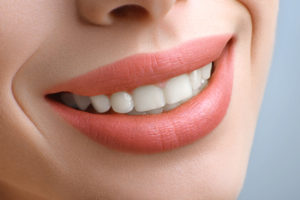Get an insight into the world of facial aesthetic procedures by understanding how these treatments are effective in fighting the signs of aging.
Facial aesthetic procedures, also known as facial rejuvenation treatments, are non-surgical treatments that have anti-aging properties. Through facial aesthetics, noticeable yet subtle enhancements of the facial features can be seen. These procedures use clinically safe injectables to give people a young, radiant, and rejuvenated look.
By blocking the nerve signals to muscles, the facial aesthetics focus on softening the wrinkles, defining the contour lines, relaxing facial expressions, and accentuating the facial features. These treatments are administered by a cosmetic dentist and focus on enhancing the beauty of smile by:
- Fighting the aging signs on your face
- Creating a symmetric appearance
- Making skin look younger and healthier
- Tightening the wrinkles and loose skin on your face
These facial aesthetics help provide an overall pleasing and radiant look by targeting specific facial issues like the forehead, cheeks, lip area, and chin. These treatments focus on aligning the face by smoothing the wrinkles and fine lines using fillers. Botox fillers are commonly used to treat wrinkles and fight signs of aging. These fillers provide a symmetric look to the face safely and naturally. Dentists, with thorough anatomical knowledge of the facial area and an unmatchable skill level, are the most suitable professionals to perform the facial treatments in a safe and hygienic environment.
Facial aesthetic procedures are gaining popularity due to the minimal discomfort and satisfactory results seen by the patients. Getting an aligned smile with straighter and whiter teeth is not the only goal for a dentist, but ensuring that the smile aligns with the rest of the face and the skin looks young and radiant is necessary to satisfy their clients. Various forms of facial aesthetics are performed to suit the personal needs of the patients. One of the commonly used facial aesthetics is dermal fillers.
Dermal fillers are widely accepted to fight aging signs due to their affordability, minimal discomfort, immediate effects, and ease of operation. Typically, aesthetic procedures use Botox for treating the upper half of the face such as the forehead and cheeks, and dermal fillers for the lower half of the face like lips and surrounding areas. Dermal fillers are mainly used for treating the oral commissures, marionette lines, and nasolabial folds. Dermal fillers are gently placed in these areas outlining the teeth, using an extraoral injection right below these creases and folds to plump them up. These injections add volume to these facial areas, smooth the facial wrinkles, and plump them up. Since lips get thinner with age, dermal fillers may also be used for lip augmentation. Dermal fillers at the end of the lips give a plumper look to the mouth area and make the skin look younger and radiant.
A competent dentist is suitable for performing a facial aesthetic treatment as they are already aware of the facial areas and have expertise in delivering profound dental anesthesia. Other healthcare workers may not be so comfortable and used to working with dental anesthesia and may result in an ineffective treatment. It may lead to most dermatologists and plastic surgeons using a topical anesthesia ointment or cream on the skin surface for 20 to 50 minutes before performing the aesthetic procedure. Though topical anesthesia is somewhat effective in numbing the area to be injected, most people feel uncomfortable during the procedure in comparison to those who were given dental anesthesia. That’s why selecting a cosmetic dentist for dermal fillers and Botox is recommended for a more comfortable and painless procedure. Another reason for the wide popularity of dermal fillers is their temporary nature. Most areas treated with dermal filler will return to their normal state within six to twelve months. This makes the procedure less invasive and people can get their original facial features if they do not opt for a refill.
Most dentists prefer a temporary dermal filler to have an option to change back to the original state if the treatment does not go as desired. Temporary dermal fillers may have an effect lasting from six months to a year, depending on the types of filler used and areas treated. The choice of dermal filler depends on the intended results and the treatment areas. It is essential to choose a filler capable of providing the desired results and suitable for the patient. Selection of the right materials and application method is also essential to get accurate results. Various materials are used in dermal fillers such as Calcium hydroxylapatite used in Radiesse and Hyaluronic acid that is used in most dermal fillers. Hyaluronic acid fillers are widely used because they add the desired volume to the facial structures and create a more natural appearance. These fillers are typically used for lower face areas and lip augmentation procedures.
















